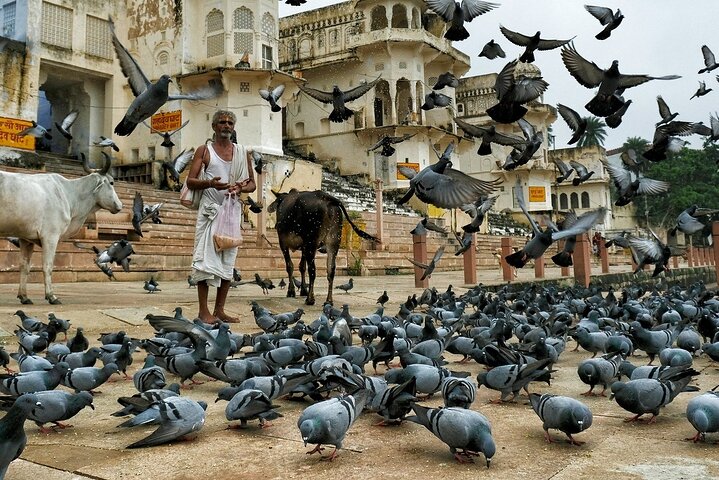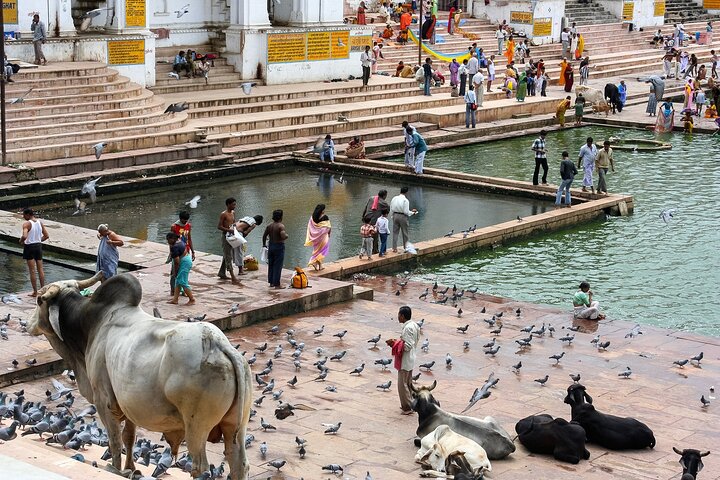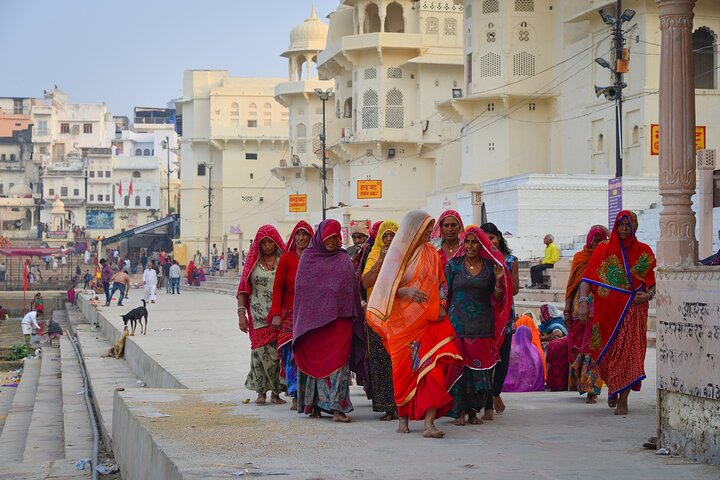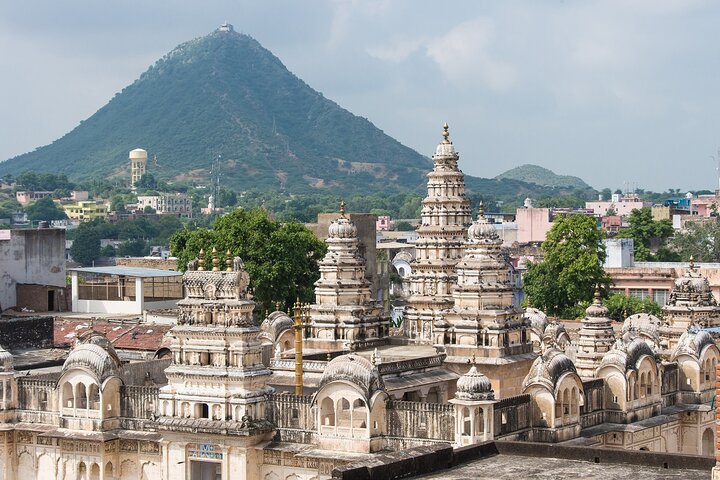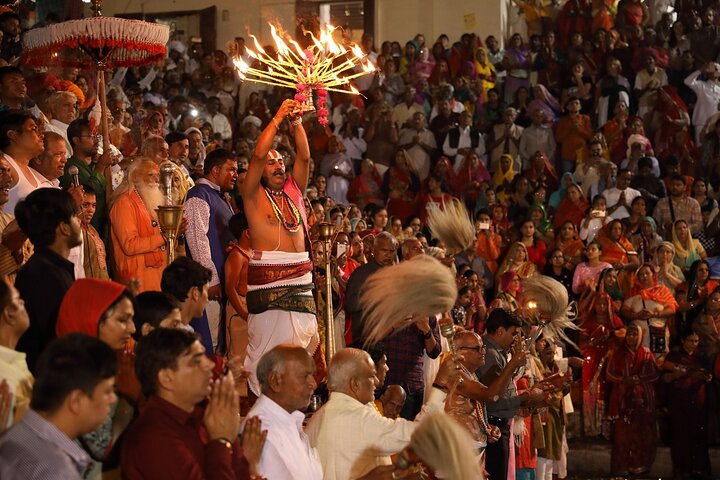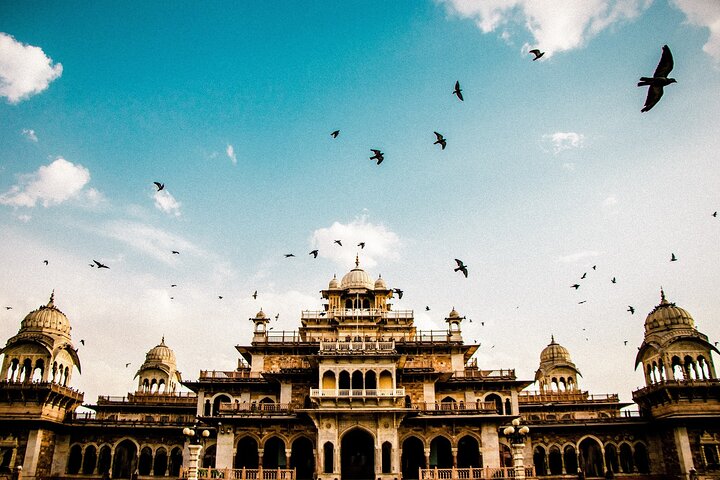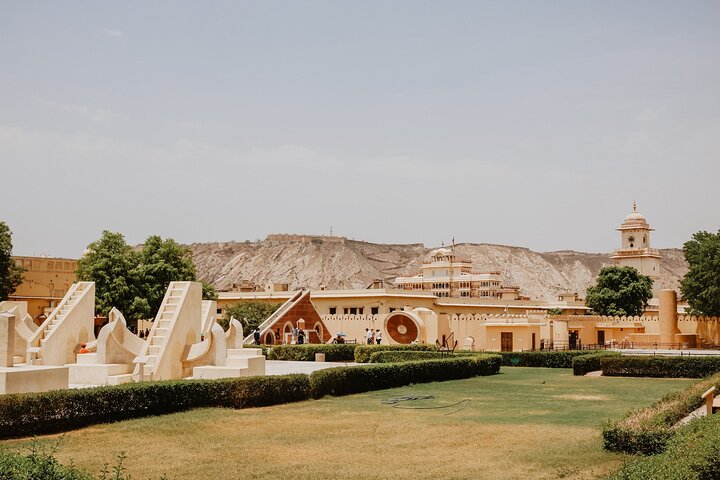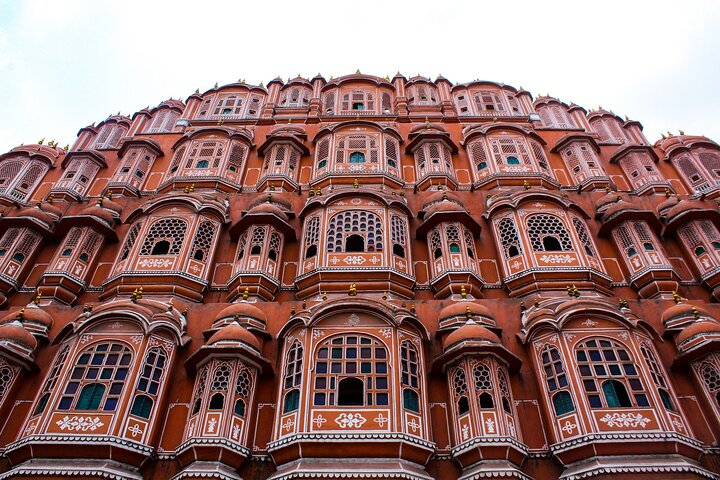9-Day Private Tour Rajasthan Motorbike with Delhi and Agra
Share this tour

Offered languages
- English
Discover the magnificent royal forts, castles, palaces, colourful markets, villages and the warmth of the people of Rajasthan, the largest Indian state, on a motorbike. Explore the colourful cities, the rich culture and heritage, the tradition which is going on for centuries in Rajasthan.
Visit Agra and Delhi and admire the spectacular Mughal architecture, including the Taj Mahal, Agra Fort, Fatehpur Sikri and more.
What's Included
Breakfast
Meeting and pickup
Guest will be pick up at their desire place in Delhi.
Itinerary
-
1New Delhi
Meet the driver in Delhi, And transfer to the hotel. Enjoy the rest of the time at leisure or visit market own self. Over night stay in Delhi hotel.
8 hours • Admission ticket free -
2
Pick up from the hotel in Delhi on a motorbike and travel towards Mandawa, a small town located in the popular Shekhawati region, famous for its charming architecture and mural paintings. Pass through the smooth highways on the way and explore the town upon arrival. Visit an open art gallery. Check-in at the pre-arranged accommodation and then continue to the local art scenes and the flea markets.
8 hours • Admission ticket free -
3
After that drive to Pushkar, The famous city and site of the only temple dedicated to the memory of Lord Brahma. At the Brahma Temple, learn about the story of the god's appearance here how various aspects of the temple architecture, such as a silver turtle at the entrance of the marble temple, act as symbols of his comings and goings.
1 hour • Admission ticket free -
4Pushkar Lake
In evening time visit Pushkar Lake, The creation of Pushkar Lake, as an artificial lake, is also credited to the 12th century when a dam was built across the headwaters of the Luni River. The 10th Sikh guru, Guru Govind Singh (1666–1708), is said to have recited the Sikh sacred text Guru Granth Sahib on the banks of the lake.
1 hour • Admission ticket free -
5
Over night stay in Pushkar hotel.
8 hours • Admission ticket free -
6
In morning time departure for Jaipur. On the way, Visit Sambhar Salt Lake, India's largest inland salt lake, located 80 km southwest of Jaipur.
1 hour • Admission ticket free -
7Jaipur
Arrive in Jaipur and check-in at a hotel. Explore the Pink City's chaotic yet orderly stunning old quarter. Over night stay in Jaipur hotel.
8 hours • Admission ticket free -
8City Palace of Jaipur
Go to City Palace of Jaipur. Spend one hour to explore Maharaja’s City Palace. City Palace of Jaipur was originally the administrative and ceremonial seat of Maharaja of Jaipur which was constructed in 1721. It was also the location of religious and cultural events that took place at that time. It now houses the Maharaja Sawai Man Singh II Museum, and continues to be the home of the Jaipur royal family.
1 hour • Admission ticket free -
9Jal Mahal
Go head down the hill to Jal Mahal, A palace floating on Man Sagar Lake, for a photo opportunity. Jal Mahal is a palace located in the middle of Man Sagar Lake in the city of Jaipur. The palace and the lake around it were renovated and enlarged in the 18th century by Maharaja Jai Singh II of Amber. The palace and scenic beauty of the lake attracts various tourists.
1 hour • Admission ticket free -
10Hawa Mahal - Palace of Wind
Hawa Mahal - It is famous "The Palace of Winds" or "The Palace of Breeze"). Built from red and pink sandstone, the palace sits on the edge of the City Palace, Jaipur, and extends to the Zenana, or women's chambers.
30 minutes • Admission ticket free -
11Albert Hall Museum
Albert Hall : An architectural delight that has captured the attention of many a ruler and wanderlust, the construction of Albert Hall Museum started in the year 1876. With the foundation stone being laid during the visit of Albert Edward (King Edward VII), the Prince of Wales, there was a lot of uncertainty that revolved around the actual purpose of this structure.
1 hour • Admission ticket free -
12Jantar Mantar - Jaipur
Then see the Jantar Mantar, A UNESCO World Heritage site built-in 1734. It is a collection of nineteen architectural astronomical instruments built by the Rajput king Sawai Jai Singh II, the founder of Jaipur. The instruments allow the observation of astronomical positions with the naked eye.
1 hour • Admission ticket free -
13
Then stop by Johri Bazaar, A shopper's paradise and a must-visit, Johari Bazaar in Jaipur have a reputation that precedes itself. Located near Hawa Mahal, this market of exquisite jewellery and artifacts to choose from can immerse shoppers in its glittering glory. It is considered to be one of the oldest markets in Jaipur City.
1 hour • Admission ticket free -
14Jaipur
Over night stay in Jaipur hotel.
8 hours • Admission ticket free -
15Chand Baori, Abhaneri
In early morning leave Jaipur for Chand Baori,Visit Chand Baori, built during the 8th and 9th centuries and has 3,500 narrow steps arranged in perfect symmetry, which descend 20m to the bottom of the well.
1 hour • Admission ticket free -
16Fatehpur Sikri
Next go to Fatehpur Sikri, A small city in northern India, just west of Agra, founded by a 16th-century Mughal emperor. Red sandstone buildings cluster at their center. Buland Darwaza gate is the entrance to Jama Masjid mosque. Nearby is the marble Tomb of Salim Chishti. Diwan-E-Khas hall has a carved central pillar. Jodha Bais Palace is a mix of Hindu and Mughal styles.
1 hour • Admission ticket free -
17Agra
After that check in Agra Hotel. Rest of time free for leisure or visit market Agra market own self.
8 hours • Admission ticket free -
18Taj Mahal
In morning time, Visit the Taj Mahal, An ivory-white marble mausoleum on the southern bank of the river Yamuna in the Indian city of Agra. It was commissioned in 1632 by the Mughal emperor Shah Jahan to house the tomb of his favourite wife, Mumtaz Mahal : It also houses the tomb of Shah Jahan himself.
1 hour • Admission ticket free -
19Agra Fort
Then go to Agra Fort, A historical fort in the city of Agra in India. It was the main residence of the emperors of the Mughal Dynasty until 1638, when the capital was shifted from Agra to Delhi. Before capture by the British, the last Indian rulers to have occupied it were the Marathas.
1 hour • Admission ticket free -
20New Delhi
After that, Depart for Delhi on a motorbike from Agra. Arrive in Delhi and check in at the hotel. Over night stay in Delhi hotel.
8 hours • Admission ticket free -
21New Delhi
After breakfast and go head to Delhi. Dispose the Moter Bike to our representative in Delhi. And start a Sight Seen in car.
1 hour • Admission ticket free -
22Red Fort
Visit Red Fort - Shah Jahan constructed Red Fort in 1638. It was the main residence of the Mughal Dynasty and is located in the city center. It is made from red sandstone, and that is where it gets its name from. It became a UNESCO World Heritage Site in 2007.
1 hour • Admission ticket free -
23
See Qutub Minar, Which is a five-story tapering tower with a height of 73 meters. The spiral staircase in this minaret has 379 staircases. It is a UNESCO World Heritage Site and visited by many every day.
30 minutes • Admission ticket free -
24Humayun's Tomb
Then go head to Humayun's tomb, The tomb of the Mughal Emperor Humayun in Delhi, India. The tomb was commissioned by Humayun's first wife and chief consort, Empress Bega Begum, in 1558, and designed by Mirak Mirza Ghiyas and his son, Sayyid Muhammad, Persian architects were chosen by her.
30 minutes • Admission ticket free -
25Pasar Chandni Chowk
Take a traditional rickshaw ride in Chandni Chowk, the oldest and busiest market in New Delhi. Chandni Chowk's literal translation- Moonlight Square, was built by a Mughal Emperor in the 17th century. It was divided by canals to reflect moonlight, but now that particular area is closed. It is one of the biggest wholesale markets in India.
2 hours • Admission ticket free -
26New Delhi
Over night stay in Delhi hotel.
8 hours • Admission ticket free -
27Jama Masjid
See one of the largest mosques in the country, Jama Masjid. It is made up of red sandstone and marble. It was constructed by Shah Jahan and is visited by hundreds of people every day. The courtyard of the mosque can accommodate about 25,000 people and be built for about one million Indian Rupees.
1 hour • Admission ticket free -
28India Gate
Go to India Gate : It is a war memorial located near the Rajpath. It is dedicated to the soldiers of British India who died in the wars. The India Gate, even though a war memorial, evokes the architectural style.
1 hour • Admission ticket free -
29Raj Ghat
Stop by Raj Ghat, A memorial dedicated to Mahatama Gandi; Raj Ghat is situated in Delhi. It is a black marble open to the sky and a flame that eternal burns at one end. It is a great place to learn more about the history of the country.
30 minutes • Admission ticket free -
30Connaught Place
Visit the Connaught Place, A frenetic business and financial hub, centered on a ring of colonnaded Georgian-style buildings with global chain stores, vintage cinemas, bars and Indian restaurants. Stalls at Janpath Market sell saris, embroidered bags, and trinkets.
1 hour • Admission ticket free -
31New Delhi
In the evening time,Guest will be Dropped off at Delhi Airport or any desired location in Delhi, With marking the end of this tour.
5 hours • Admission ticket free
Arrival in Delhi.
Delhi to Mandawa (250 KM/5 Hrs).
Mandawa to Pushkar (220 KM/ 4 Hrs).
Pushkar to Jaipur (130 KM/ 3 hrs).
Jaipur Sight Seen.
Jaipur To Agra (240 KM/5 Hrs) En route see the Chand Baori & Fatehpur Sikri.
Agra to Delhi (240 KM/ 4 Hrs).
Delhi Sight Seen and Dispose the Moter Bike.
Delhi Sight Seen with end of this tour.
Additional info
- Public transportation options are available nearby
- Suitable for all physical fitness levels
- Enjoy a personalized motorcycle tour experience with a dedicated escort vehicle. Your knowledgeable guide will accompany you in a separate car, providing language assistance and ensuring you stay on course throughout the adventure.
Tags
Cancellation Policy
For a full refund, cancel at least 24 hours before the scheduled departure time.
Show more
Cancellation Policy
- For a full refund, you must cancel at least 24 hours before the experience’s start time.
- If you cancel less than 24 hours before the experience’s start time, the amount you paid will not be refunded.
- Any changes made less than 24 hours before the experience’s start time will not be accepted.
You can cancel up to 24 hours in advance of the experience for a full refund.
Your guide to the flawless travel experience















